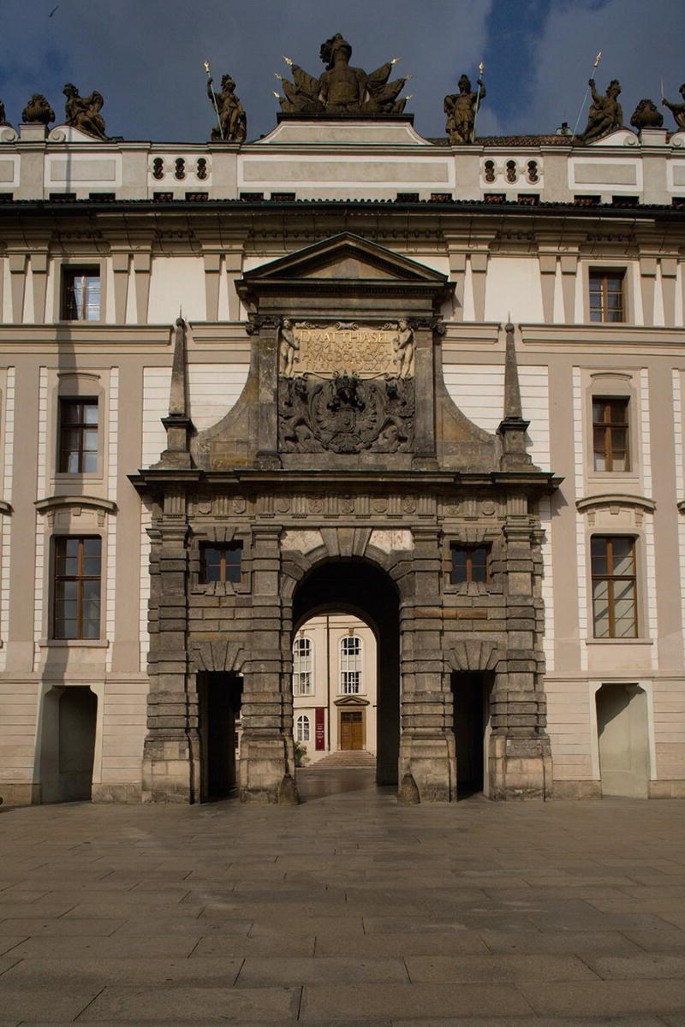Discover the charm and historical significance of Prague, the heart of the Czech Republic, through its enchanting streets. This article delves into the rich history of Prague, emphasizing the importance of its historic streets that have witnessed centuries of transformation. From cobblestone pathways to grand avenues, these streets not only showcase architectural marvels but also reflect the cultural essence of the city. Explore the top historic streets in Prague, uncover their architectural highlights, and understand their cultural significance. Join us on a journey through the historic streets of Prague, where history and culture converge to create a captivating urban tapestry.
Join ritarblog.com as we delve deeply into this topic.
1. Introduction
Prague, the capital of the Czech Republic, is a city steeped in history, where every street and alleyway tells a story of its illustrious past. Known for its stunning architecture, vibrant culture, and rich heritage, Prague is often referred to as the “City of a Hundred Spires.” This article invites you to embark on a journey through the historic streets of Prague, exploring the essence of a city that has been a witness to centuries of political, social, and cultural transformations.
Prague’s historic streets are not merely pathways; they are the veins through which the lifeblood of the city’s history flows. Each street holds a unique significance, from the bustling Charles Bridge, adorned with statues and offering panoramic views of the Vltava River, to the serene Golden Lane, with its quaint, colorful houses. These streets have seen emperors, artists, and revolutionaries, each leaving their indelible mark on the city’s character.
As we delve into the history of Prague, we will uncover the importance of these historic streets and their role in shaping the city’s identity. We will highlight some of the most iconic streets, showcase their architectural splendors, and delve into their cultural significance. Join us as we walk through time, discovering the stories and secrets of Prague’s most historic streets.
2. History of Prague
Prague’s history is a tapestry woven with the threads of medieval grandeur, imperial ambition, and modern resilience. Founded in the 9th century, Prague began as a small settlement on the Vltava River, gradually expanding into a significant cultural and economic hub. By the 14th century, under the reign of Charles IV, Prague flourished as the capital of the Holy Roman Empire. This era saw the construction of many of the city’s iconic landmarks, including Charles Bridge and the majestic St. Vitus Cathedral.
The city endured turbulent times during the Hussite Wars in the 15th century and later the Thirty Years’ War, which left lasting scars. However, Prague’s resilience shone through as it rebuilt and reestablished itself as a center of learning and culture during the Baroque period.
The 20th century brought further upheaval with the impacts of World War II and the communist era, yet Prague’s spirit remained unbroken. The Velvet Revolution of 1989 marked the end of communist rule, ushering in a new era of democracy and growth. Today, Prague stands as a testament to its rich and varied history, with its historic streets serving as a living museum of the past, inviting visitors to explore its enduring legacy.

3. Importance of Historic Streets

The historic streets of Prague are more than just thoroughfares; they are vital links to the city’s storied past. These streets are essential in preserving the architectural heritage and cultural identity of Prague. Walking along these ancient pathways offers a tangible connection to the eras that shaped the city, from medieval times through the Renaissance and Baroque periods, to the modern day.
Each street in Prague tells a part of the city’s history, serving as an open-air museum where buildings, statues, and monuments narrate tales of bygone times. Streets like the Royal Route, once traversed by Bohemian kings during coronation processions, or the picturesque lanes of Old Town, with their cobblestone surfaces, encapsulate the essence of historical events and daily life over the centuries.
Moreover, these historic streets contribute significantly to Prague’s charm and allure, attracting millions of visitors annually. They are not only pivotal in understanding the city’s past but also play a crucial role in its present-day cultural and economic vitality, making them invaluable to Prague’s heritage.
4. Top Historic Streets in Prague

Prague boasts an array of historic streets, each with its unique charm and significance. Among the most renowned is Charles Bridge, a medieval stone bridge adorned with Baroque statues, connecting Old Town with Lesser Town. This iconic bridge offers breathtaking views of Prague Castle and the Vltava River, making it a must-visit.
Another notable street is the Royal Route, which begins at the Powder Tower and passes through Old Town Square, continuing up to Prague Castle. This route was historically used for royal coronation processions, and today it is lined with historic buildings and vibrant shops.
Golden Lane, located within the Prague Castle complex, is famous for its colorful, small houses that once housed castle guards and goldsmiths. This quaint street captures the medieval essence of Prague.
Lastly, Nerudova Street, named after the Czech writer Jan Neruda, is a picturesque lane leading up to Prague Castle. Known for its beautifully preserved Baroque houses and quirky signs, it offers a charming glimpse into Prague’s architectural and cultural past. These streets collectively highlight the rich history and architectural splendor that define Prague.
5. Architectural Highlights
Prague’s historic streets are adorned with architectural marvels that span centuries, showcasing a diverse array of styles and influences. One of the most prominent examples is the Charles Bridge, a masterpiece of Gothic engineering, flanked by striking Baroque statues added in the 17th century. This blend of Gothic and Baroque elements epitomizes the architectural diversity that characterizes Prague.
Strolling along the Royal Route, visitors encounter the Gothic splendor of the Powder Tower and the ornate Rococo facade of Kinský Palace in Old Town Square. The route culminates at Prague Castle, a sprawling complex that includes the Gothic St. Vitus Cathedral, the Romanesque Basilica of St. George, and the Renaissance-style Royal Palace. Each structure within the castle complex offers a glimpse into the architectural evolution of Prague over the centuries.
Golden Lane, with its diminutive, colorful houses, reflects the quaint charm of medieval architecture, while Nerudova Street is lined with Baroque townhouses featuring intricate facades and decorative signs. These architectural highlights are not merely static relics but vibrant, living parts of the city, reflecting the historical and cultural transitions that Prague has undergone.
Together, these structures and streetscapes create a unique urban landscape, where each building and pathway contributes to the rich tapestry of Prague’s architectural heritage, captivating visitors with their historical depth and artistic beauty.

6. Cultural Significance
The historic streets of Prague are not just architectural wonders; they are cultural treasures that embody the city’s rich heritage and vibrant traditions. These streets have witnessed countless historical events, from royal processions to revolutionary uprisings, making them central to Prague’s collective memory and identity.
Charles Bridge, for example, is not only a marvel of engineering but also a cultural icon, hosting local artists, musicians, and craftsmen who contribute to the lively atmosphere. Similarly, the Royal Route is steeped in tradition, having been the path for coronation parades and public festivities that celebrate Czech heritage.
Golden Lane, once home to craftsmen and alchemists, now serves as a cultural window into medieval life, attracting visitors who seek to experience Prague’s historical ambiance. Nerudova Street, with its literary connections and artistic legacy, offers insight into the cultural and intellectual currents that have shaped Prague.
These historic streets also play a crucial role in modern cultural expression, serving as venues for festivals, markets, and public gatherings that continue to foster community spirit and cultural continuity. By preserving and celebrating these historic streets, Prague maintains a living connection to its past while nurturing the cultural vibrancy that defines its present and future.
7. Conclusion
In conclusion, Prague’s historic streets encapsulate the essence of a city that has seamlessly blended its rich past with its vibrant present. From the medieval charm of Charles Bridge to the majestic grandeur of Prague Castle, each street and alleyway tells a story of resilience, creativity, and cultural evolution.
Exploring these streets offers not just a journey through time but also an immersion into Prague’s architectural diversity, from Gothic and Baroque masterpieces to quaint, colorful houses that dot Golden Lane. These streets are more than mere tourist attractions; they are living testaments to Prague’s enduring spirit and cultural identity.
Moreover, Prague’s historic streets serve as cultural hubs, where local traditions and artistic expression flourish. Whether through street performances on Charles Bridge or cultural festivals along the Royal Route, these streets continue to be vibrant centers of community life and celebration.
As visitors wander through the cobblestone paths and hidden alleys of Prague, they are invited to discover the city’s past and present intertwined in its streetscapes. By preserving and appreciating these historic treasures, Prague ensures that future generations can continue to marvel at the beauty, heritage, and cultural significance that its streets embody. Ultimately, the historic streets of Prague invite all to explore, connect, and experience the timeless allure of this remarkable city.

